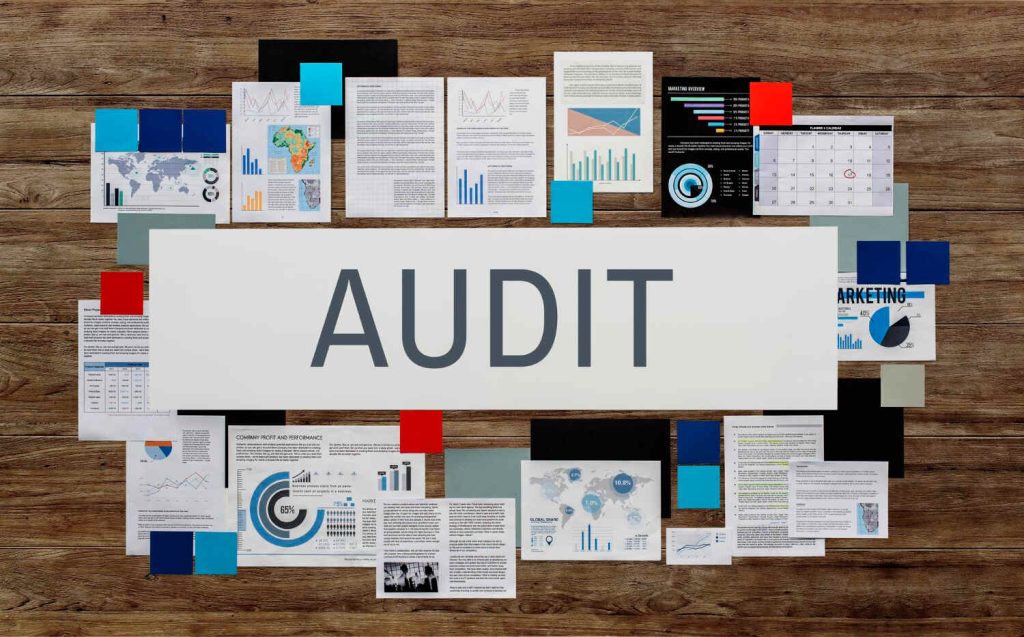Introduction
In today’s digital age, content marketing has become an indispensable tool for businesses looking to engage their target audience, build brand awareness, and drive customer loyalty. However, creating compelling content without a well-defined strategy can be like shooting in the dark. To maximise the effectiveness of your marketing efforts, it is crucial to develop a robust content strategy that aligns with your business goals. In this two-part blog series, we will explore the essential steps involved in creating a content strategy that yields measurable results. In Part 1, we will focus on understanding your target audience, defining goals, and conducting a content audit.
Step 1: Understand Your Target Audience
Before diving into content creation, it is vital to have a deep understanding of your target audience. By knowing their preferences, interests, pain points, and demographics, you can tailor your content to resonate with them. Here are a few key ways to gather insights about your audience:
- Define buyer personas: Develop detailed profiles of your ideal customers. Consider their demographics, behaviours, motivations, and goals. This will help you create content that speaks directly to their needs and interests.
- Conduct market research: Utilise surveys, interviews, and analytics tools to gather data about your target audience. Look for patterns and trends that can inform your content strategy.
- Analyse social media engagement: Examine the interactions and conversations happening around your brand on social media platforms. This will provide valuable insights into what content your audience finds valuable and engaging.
By gaining a deep understanding of your target audience, you can create content that resonates with their needs and interests. Developing buyer personas and conducting market research will provide valuable insights to inform your content strategy. Additionally, analysing social media engagement can help you understand what content your audience finds valuable and engaging.
Step 2: Define Your Goals
Setting clear goals is crucial for any successful marketing strategy. Your content strategy should align with your overall business objectives and help you achieve specific outcomes. Here are some common content marketing goals:

- Increase brand awareness: If your business is relatively new or seeking to expand its reach, your content strategy can focus on increasing brand visibility and recognition.
- Drive website traffic: If your website is a primary channel for conversions or sales, your content strategy should prioritise creating engaging content that drives traffic to your site.
- Generate leads: Content can play a significant role in lead generation by providing valuable resources and encouraging visitors to share their contact information.
- Build thought leadership: Establishing your brand as an industry authority can enhance credibility and attract a loyal audience. Content that demonstrates expertise and provides valuable insights can help achieve this goal.
- Nurture customer loyalty: Retaining existing customers is often more cost-effective than acquiring new ones. Your content strategy can focus on nurturing customer relationships, providing ongoing value, and fostering brand loyalty.
Defining your goals is crucial to align your content strategy with your business objectives. Whether it’s increasing brand awareness, driving website traffic, generating leads, building thought leadership, or nurturing customer loyalty, your content should serve a specific purpose and contribute to achieving these goals.
Step 3: Conduct a Content Audit
To develop an effective content strategy, it’s essential to assess your existing content assets. A content audit helps you identify gaps, uncover strengths and weaknesses, and make data-driven decisions. Follow these steps to conduct a comprehensive content audit:
- Inventory your content: Compile a list of all the content you have, including blog posts, videos, infographics, whitepapers, and social media posts. Categorise them by format, topic, and stage in the customer journey.
- Assess performance: Evaluate the performance of each content piece using metrics such as page views, social shares, comments, and conversions. Identify the top-performing content and determine the factors contributing to their success.
- Identify gaps and opportunities: Analyse your content inventory to identify topics or formats that are underrepresented. Look for opportunities to fill these gaps and provide value to your audience.
- Evaluate content quality: Review the quality, relevance, and accuracy of your content. Identify areas for improvement, such as outdated information or content that no longer aligns with your brand messaging.

Conducting a content audit allows you to evaluate your existing content assets. By inventorying your content and assessing its performance, you can identify strengths, weaknesses, gaps, and opportunities. This information will guide your content strategy moving forward, helping you make data-driven decisions about what content to create, update, or remove.
Now, let’s dive into the remaining steps involved in crafting an effective content strategy: creating a content calendar, developing a content creation process, and measuring and optimising your content performance.
Join the NoLimits Business Community
Are you a business owner looking to take your business to the next level? Join our innovative community of like-minded professionals and gain access to a wealth of valuable resources, including a community portal to chat with other business owners, ebooks, business development software, and growth events that will transform the way you do business. Best of all, these resources are completely free and will be available to you forever.
But the benefits of joining our NoLimits business community don’t stop there. By becoming part of our community, you’ll have the opportunity to connect with other business owners, share insights and ideas, and build valuable relationships that will help your business thrive. Don’t miss out on this amazing opportunity to supercharge your business and join us today!
Step 4: Create a Content Calendar
A content calendar is a schedule that outlines when and what content you will publish. It helps you stay organized, maintain consistency, and align your content with key events, seasons, or campaigns. Here’s how you can create a content calendar:
- Determine publishing frequency: Decide how often you will publish content. It could be daily, weekly, bi-weekly, or monthly, depending on your resources and audience preferences.
- Identify content themes: Choose overarching themes or topics that align with your business goals and resonate with your target audience. These themes will guide your content creation efforts.
- Plan content formats: Consider the types of content you will create, such as blog posts, videos, infographics, podcasts, or social media posts. Each format serves different purposes and engages your audience in unique ways.
- Assign deadlines and responsibilities: Clearly define deadlines for content creation, review, and publishing. Assign responsibilities to team members involved in the content creation process to ensure smooth execution.
- Incorporate key dates and events: Take note of relevant dates, holidays, industry events, and product launches. Align your content calendar to capitalise on these opportunities and create timely, relevant content.
Step 5: Develop a Content Creation Process
To consistently produce high-quality content, you need a streamlined content creation process. This ensures that everyone involved understands their roles, follows a standardised workflow, and maintains a consistent brand voice. Consider the following steps when developing your content creation process:
- Ideation and research: Brainstorm content ideas that align with your themes and goals. Conduct research to gather supporting information, statistics, and examples. Tools like keyword research can help optimise your content for search engines.
- Content creation: Assign content creation tasks to your team members or external writers. Provide clear guidelines and templates to maintain consistency in tone, style, and formatting. Encourage collaboration and feedback during the creation phase.
- Editing and proofreading: Establish a review process to ensure the accuracy, clarity, and coherence of your content. Assign editors or proof-readers to review content before it goes live. Consider using grammar and spelling checkers and style guides to maintain quality standards.
- Visual assets and design: If applicable, coordinate with designers or use online tools to create visually appealing assets such as images, videos, or infographics. Visual elements enhance the overall impact of your content and improve engagement.

- Approval and publishing: Obtain final approvals from relevant stakeholders and schedule content for publishing according to your content calendar. Utilise content management systems or social media scheduling tools to automate and streamline the publishing process.
Step 6: Measure and Optimise Your Content Performance
Measuring the performance of your content is essential for understanding its impact and making data-driven improvements. Here are some key metrics to consider:
- Consumption metrics: Track metrics like page views, time spent on page, bounce rate, and scroll depth to assess how well your content engages readers.
- Engagement metrics: Measure social media shares, likes, comments, and click-through rates to gauge the level of audience interaction and interest.
- Conversion metrics: Monitor conversion rates, form submissions, downloads, or purchases to evaluate how effectively your content drives desired actions.
- SEO metrics: Analyse keyword rankings, backlinks, and organic search traffic to assess the search engine optimisation (SEO) performance of your content.
- Audience feedback: Pay attention to comments, feedback, and reviews from your audience. Use surveys or feedback forms to gather insights into their preferences and suggestions for improvement.
Once you have collected data, use it to optimise your content strategy:
- Identify top-performing content: Determine which pieces of content are resonating well with your audience and driving the desired outcomes. Analyse the characteristics and elements that make them successful.
- Analyse underperforming content: Identify content that is not meeting expectations or failing to generate the desired results. Assess possible reasons, such as poor targeting, weak headlines, or suboptimal distribution channels.
- Refine and repurpose content: Based on your analysis, optimise underperforming content by making necessary improvements. Consider repurposing successful content into different formats or updating outdated information.
- Experiment and iterate: Don’t be afraid to try new ideas and approaches. Test different content formats, headlines, and distribution channels. Continuously analyse the results and iterate your strategy based on the insights gained.
- Stay updated with industry trends: Keep abreast of the latest industry trends, audience preferences, and changes in search engine algorithms. Adapt your content strategy accordingly to ensure relevance and maintain a competitive edge.
Conclusion
Creating a content strategy is a vital component of any comprehensive marketing plan. In this two-part blog series, we have explored the essential steps involved in crafting an effective content strategy.
By following these steps, you can develop a well-aligned content strategy that engages your target audience, achieves your business goals, and drives meaningful results. Remember, consistency, relevance, and continuous improvement are key to successful content marketing. Regularly analyse and adapt your strategy to stay ahead of the curve and maintain a strong connection with your audience.
With a solid content strategy in place, you are well-equipped to create valuable, engaging content that builds brand authority, nurtures customer relationships, and drives business growth.
If you would like more specific guidance with understanding this or any management tools why not look at our NoLimits Community – become a member at any level and join our community.
By Jeremy Graham-Clare
Join the NoLimits Business Community
Are you a business owner looking to take your business to the next level? Join our innovative community of like-minded professionals and gain access to a wealth of valuable resources, including a community portal to chat with other business owners, ebooks, business development software, and growth events that will transform the way you do business. Best of all, these resources are completely free and will be available to you forever.
But the benefits of joining our NoLimits business community don’t stop there. By becoming part of our community, you’ll have the opportunity to connect with other business owners, share insights and ideas, and build valuable relationships that will help your business thrive. Don’t miss out on this amazing opportunity to supercharge your business and join us today!

